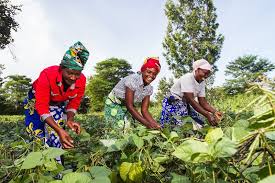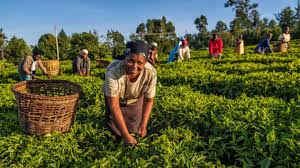This article explains the concept of food security and food insecurity in relation to the rural community food system. It also presents food insecurity measurement methods and indicators credited to Maxwell et al.
Vhurumuku, including Campbell’s four essential components for measuring food security. Furthermore, it discusses the relationship between the community food system (CFS) and agricultural entrepreneurship.
Definition and Agricultural Relevance of Food Security
Food security has been defined by many scholars from different perspectives. It exists when all people at all times have physical and economic access to sufficient, safe, and nutritious food to meet their dietary needs. It also involves food preferences for an active and healthy life.
The World Food Summit in 1996 defined food security as a condition in which all people have physical, social, and economic access to sufficient, safe, and nutritious food at all times.
The food must also meet the nutritional demands of an active and healthy life (FAO, 1996). This definition was reaffirmed in 2009 and further expanded by outlining four core pillars: i. Availability, ii. Access, iii. Utilization, and iv. Stability.
Okunmadewa et al. (1990) described food security as the availability and access to food by any being who requires it.
Food security at international, national, and household levels implies that the world, nation, and households must either produce or have access to enough food to meet the population’s growing demands.
This includes the need for free and stable trade in food products. There must be adequate food availability to meet per capita food needs over time. In simple terms, food security is achieved when all individuals have consistent access to sufficient, safe, and nutritious food throughout the year.
The 1992 FAO/WHO International Conference on Nutrition defined food security in its simplest form as access by all people at all times to the food required for a healthy life. It includes three (3) key dimensions:
a. Assurance of a safe and nutritionally adequate food supply at national and household levels,
b. A reasonable degree of stability in food supply throughout the year and between years, and
c. Physical, social, and economic access for every household to sufficient food to meet its needs.
Read Also: How to determine if the Oxygen Level of the water in your Fish Pond is enough
Food Security Measurement and Indicators in Rural Agriculture

Food security measurement is essential to classify food-insecure households, assess the severity of food shortages, and determine the extent of insecurity (Hoddinott, 2001).
Various methods are used to assess food insecurity at the household level, with attention to cost, time, technical skill, and misreporting risks. The four outcome indicators include:
a. Individual intake
b. Household calorie requisition
c. Dietary diversity, and
d. Coping strategies index. Among these, household calorie acquisition is considered the most reliable.
Campbell (1991) identified four components for measuring food security at the individual and household levels:
i. Availability of sufficient quantity of food
ii. Quality of food in terms of types and diet variety
iii. Physiological acceptability involving feelings of food deprivation, anxiety, and restricted food choice, and iv. Social acceptability of consumption patterns according to cultural norms, such as acquiring food through purchase rather than begging or stealing.
Since no single tool can completely measure household food security, several indicators are aggregated. Nonetheless, efforts continue to refine rapid, accurate, and consistent indicators.
Barrett (2010) emphasized that current approaches follow four core pillars availability, access, utilization, and risk (i.e., stability or vulnerability) and often differ based on analytical frameworks.
Relying on one isolated indicator risks underestimating food-insecure populations.
Definition and Agricultural Impact of Food Insecurity

Food insecurity is a condition where individuals lack the basic food intake necessary to provide adequate energy and nutrients for productive life.
According to the United Nations, food insecurity involves the denial of choice and the chance to live a decent life.
Food insecurity can also be transitory arising temporarily from food production instability, rising prices, or income shortages (Omonona and Agoi, 2007).
Availability alone does not ensure food security, especially for those lacking purchasing power due to low or irregular income.
Therefore, even when food is available and accessible, its effective use requires clean drinking water, environmental hygiene, primary health care, and basic education.
Strategic food reserves, especially grains, play a limited role in long-term food security but are crucial in providing short-term relief during regional, seasonal, or national shortages.
These reserves stabilize prices and offset fluctuations in supply. Usually maintained by government agencies, such stocks ensure defined quantities are available for emergencies.
In drought-prone regions, food reserves offer temporary relief but are not a lasting solution to chronic food insecurity.
Read Also: Economic Importance, Uses, and By-Products of Watermelon Axils
Food Insecurity Measurement and Indicators in Agricultural Development
Maxwell et al. (2013) assessed seven tools for measuring food security, which are:
a. Coping Strategies Index (CSI)
b. Reduced Coping Strategies Index (RCSI)
c. Household Food Insecurity and Access Scale (HFIAS),
d. Household Hunger Scale (HHS)
e. Food Consumption Score (FCS),
f. Household Dietary Diversity Scale (HDDS)
g. Self-Assessed Measure of Food Security (SAFS)**.
Similarly, Vhurumuku (2014) reviewed FCS, HDDS, CSI, Individual Dietary Diversity Scale (IDDS), HHS, SAFS, and RCSI as important indicators.
A high score in any of these indicators may still reveal the presence of food insecurity, showing that even when some aspects appear positive, deeper analysis might uncover hidden vulnerabilities.
Do you have any questions, suggestions, or contributions? If so, please feel free to use the comment box below to share your thoughts. We also encourage you to kindly share this information with others who might benefit from it. Since we can’t reach everyone at once, we truly appreciate your help in spreading the word. Thank you so much for your support and for sharing!

